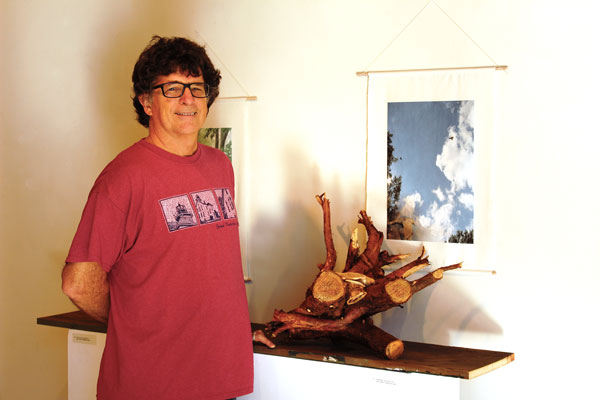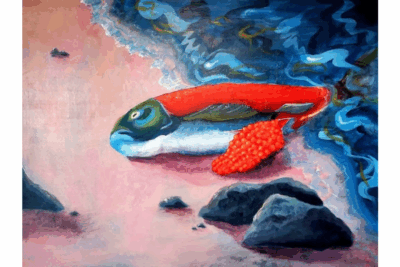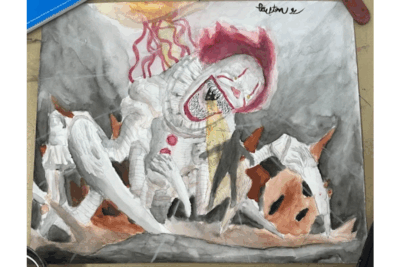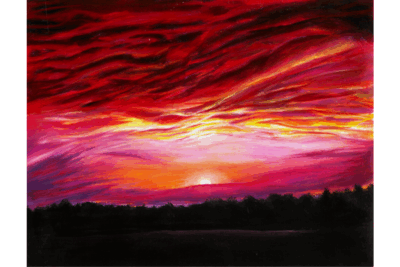If you venture into the Hershberger Art Gallery right now, you will find several lifeless birds.
The gallery is showing Merrill Krabill’s most recent project entitled, Between Earth and Sky: exploring loss and redemption. The exhibit is made up of smaller pieces, all exploring the contrast between life and death.Each piece is comprised of a section of a tree root, a clay bird, seemingly lifeless, nesting in the root and a landscape photograph printed on an accompanying hanging cloth. In each photograph, the clay bird’s image has been edited into the sky scene, emphasizing the interaction between earth and sky.
This project is one step in an evolution of artistic ideas that Krabill, a professor of art, has been ruminating over for the past seven years.
“Pieces sort of lead into the next series of pieces,” said Krabill. He has recently become interested in incorporating end-of-life themes into his artwork.
This current project started, in part, as a previous project that focused on gateways. Inspired by Japanese ceramic pieces, Krabill made a series of clay gateways that incorporated rough forms of clay and other earthy materials like wood and metal.
Then last year in the faculty show Krabill exhibited a memorial project which went along with the end-of-life theme. That memorial exhibit transformed into what is now Between Earth and Sky.
Although Krabill’s title and artist statement express some degree of meaning, he did not start the project with one specific message in mind.
“When I’m working in the studio,” said Krabill, “I’m not necessarily thinking about the content or the meaning… I’m mostly just trying to figure out what feels right for [the] piece.”
He notes that at times he feels like an audience member, trying to decipher the meaning of the piece after the piece is already made.
That being said, Between Earth and Sky has a clear pattern which holds both poetic and philosophical significance. As Krabill wrote in his artist statement, “The images behind the sculptural piece have a bird or birds in flight somewhere. The challenge for me, visually and poetically, is to see them as part of the same moment. My understanding of experience is built on seeing how ideas fit together in the same moment.”
Krabill went on to explain how this duality is a spiritual way of viewing the world. He referenced the Buddhist belief that a world without suffering would be a world without understanding. According to this belief, we need both life and death to fully capture the depth of human experience.
Throughout this entire project, Krabill doesn’t shy away from symbolic contrast. He places each clay bird on a root, which might strike some as surprising. Krabill named the significance of the birds being held carefully, even though they’re dead.
“A student last week made the nice observation that the birds are dead, but you don’t usually see dead birds in a tree,” said Krabill. Even after completing the project, Krabill is still being exposed to the deep layers of meaning within his own work.
Krabill’s exhbit will be available in the Hershberger Gallery at the Music Center until Nov. 5.



